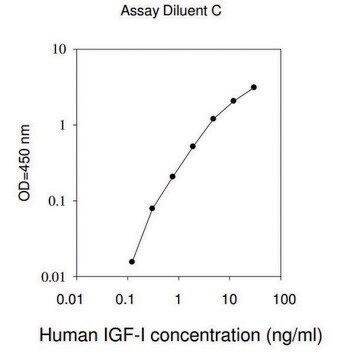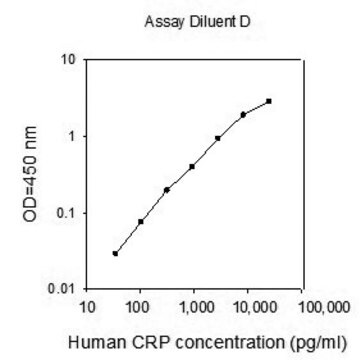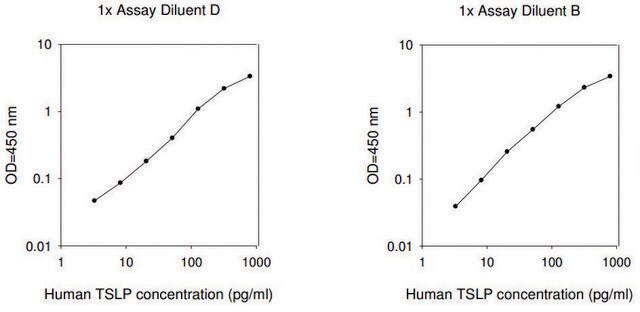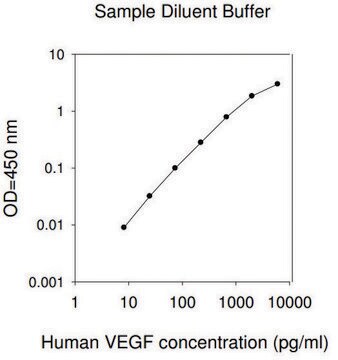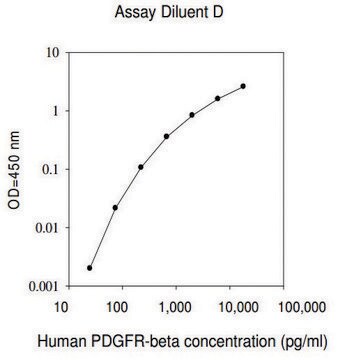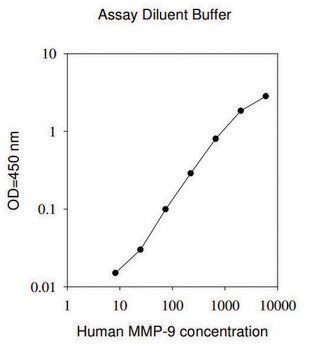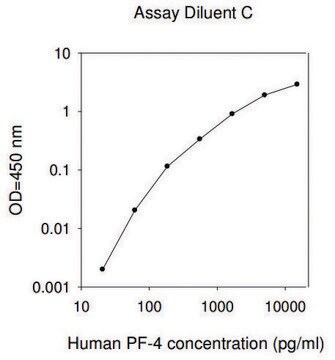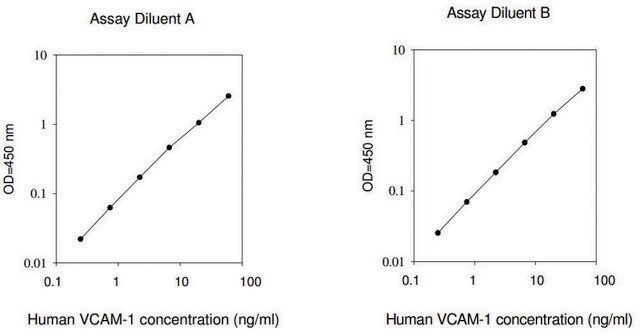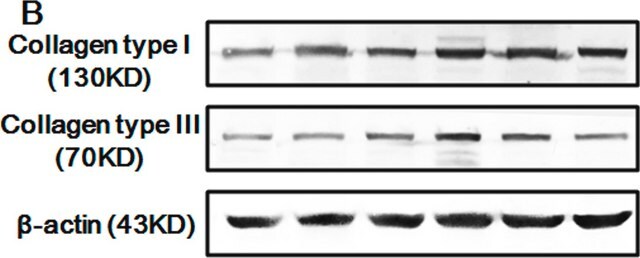RAB0736
Human SDC1 / Syndecan-1 ELISA Kit
Autenticatiper visualizzare i prezzi riservati alla tua organizzazione & contrattuali
About This Item
Codice UNSPSC:
41116158
NACRES:
NA.32
Prodotti consigliati
Reattività contro le specie
human
Confezionamento
kit of 96 wells (12 strips x 8 wells)
tecniche
ELISA: suitable
input
sample type cell culture supernatant(s)
sample type serum
sample type plasma
assay range
inter-assay cv: <12%
intra-assay cv: <10%
sensitivity: 14 pg/mL
standard curve range: 16.38-4000 pg/mL
Metodo di rivelazione
colorimetric
Condizioni di spedizione
wet ice
Temperatura di conservazione
−20°C
Informazioni sul gene
human ... SDC1(6382)
Descrizione generale
The antibody pair provided in this kit recognize human Syndecan-1/CD138.
Applicazioni
For research use only. Not for use in diagnostic procedures.
Please refer to the attached General ELISA KIT Procedure (sandwich, competitive & Indirect ELISA)
Please refer to the attached General ELISA KIT Procedure (sandwich, competitive & Indirect ELISA)
Altre note
A sample Certificate of Analysis is available for this product.
Please type the word sample in the text box provided for lot number.
Please type the word sample in the text box provided for lot number.
Avvertenze
Warning
Indicazioni di pericolo
Consigli di prudenza
Classi di pericolo
Met. Corr. 1
Codice della classe di stoccaggio
8A - Combustible corrosive hazardous materials
Punto d’infiammabilità (°F)
Not applicable
Punto d’infiammabilità (°C)
Not applicable
Scegli una delle versioni più recenti:
Possiedi già questo prodotto?
I documenti relativi ai prodotti acquistati recentemente sono disponibili nell’Archivio dei documenti.
Lawrence N Diebel et al.
The journal of trauma and acute care surgery, 84(4), 575-582 (2017-12-30)
Early resuscitation after trauma-hemorrhagic shock with plasma rather than crystalloid may ameliorate systemic endothelial cell (EC) injury and dysfunction (endotheliopathy of trauma). We postulated that endothelial-lined microfluidic networks would be a useful platform to study the EC activation/injury under flow
Mark E Diebel et al.
The journal of trauma and acute care surgery, 84(1), 75-80 (2017-10-19)
The endothelial glycocalyx (GCX) plays an important role in vascular barrier function. Damage to the GCX occurs due to a variety of causes including hypoxia, ischemia-reperfusion, stress-related sympathoadrenal activation, and inflammation. Tranexamic acid (TXA) may prevent GCX degradation. The therapeutic
Jonathan V Martin et al.
American journal of surgery, 214(6), 1166-1172 (2017-10-05)
Geriatric trauma patients have high circulating norepinephrine (NE) levels but attenuated release of epinephrine (Epi) in response to increasing severity of injury. We hypothesized that NE and Epi have different effects on the endothelial and glycocalyx components of the vascular
Josephine Koch et al.
American journal of physiology. Renal physiology, 316(1), F121-F127 (2018-11-01)
Syndecan-1, a transmembrane heparan sulfate proteoglycan, associates with renal and cardiovascular functioning. We earlier reported syndecan-1 to be involved in renal tubular regeneration. We now examined plasma values of syndecan-1 in a hemodialysis cohort and its association with volume and
Kohji Uzawa et al.
Journal of anesthesia, 34(1), 36-46 (2019-10-17)
Fluid therapy focused on glycocalyx (GCX) protection in hemorrhagic shock is a current focus of research. Hydroxyethyl starch (HES) solution is commonly used for fluid resuscitation; however, its effects on the GCX remain unclear. The primary aim of this study
Il team dei nostri ricercatori vanta grande esperienza in tutte le aree della ricerca quali Life Science, scienza dei materiali, sintesi chimica, cromatografia, discipline analitiche, ecc..
Contatta l'Assistenza Tecnica.